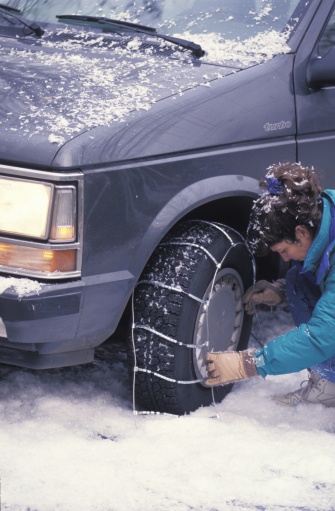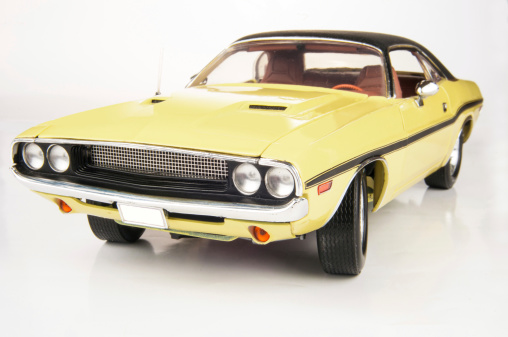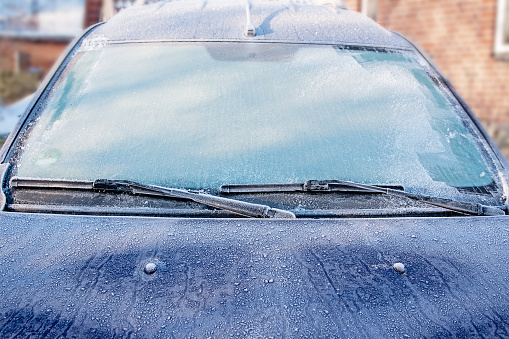Before front-wheel drive and all-wheel drive became standard equipment on most cars, automotive manufactures were willing to develop just about any feature or gadget their engineers could conceive to make the winter driving experience a little easier.
Sure, you could have modified your ride with snow tires, chains and driving lights back in the day. But the real challenge was developing dealer options that were specifically designed to help drivers get from point A to point B in snow, slush and ice.
Even though the following accessories never caught on with consumers and may seem impractical by today’s standards, they marked the height of winter driving technology developed by the Big Three in the 1960s, 70s and 80s.

Liquid Tire Chain Dispenser
Nowadays, whenever your car’s wheels begin to slide out from under you, traction control will automatically kick on, helping the tires get a grip on the road’s slick surface.
But before this system was invented, maintaining traction through changing weather conditions wasn’t always guaranteed. As a result, engineers at General Motors came up with the idea to have liquid traction automatically sprayed on the rear wheels with the press of a button.
Marketed as V75 Tire Liquid Chain, this option had two aerosol cans that contained a polymer designed to coat the rear tires with a chemical that could improve traction – even on ice – mounted on each side of the trunk.
This system was only available on the 1969 Chevrolet lineup, though, and was discontinued shortly thereafter because of lackluster sales. And whether it actually worked properly is still up for debate.
Since then, other third-party companies have tried to produce and market their own variation of the spray without the on-board controls.
The Super-Lite
In the late 1960s, as manufactures regularly began dropping big block V8s into passenger cars to beef up their performance, a unique problem arose. The large engines were using so much power that the standard halogen sealed beam headlights weren’t properly lighting the road ahead.

So, Dodge created the Super-Lite, a circular quartz-iodide lamp that was positioned in the far right of the grille (each car only had one) of full-size models produced in 1969.
The light was aimed at matching the power and speed of engines at the time and filled the void between the low and high-beam by casting light wide instead of high.
It was not intended to solely be a cold-weather accessory, but the Super-Lite aided in winter driving because it was an intermediate lamp that could illuminate snow-covered roads better than a low beam, but without the obnoxious glare of a high beam in a snowstorm.
Although the Super-Lite was dropped after one year, it ultimately influenced modern running lights and HID bulbs.
Instaclear
Scraping ice from your windshield on a cold winter morning, or letting your vehicle idle for 15 minutes or so until the defroster warms up, is typically viewed as one of the worst parts of winter driving. And it’s been an unpleasant chore since the age of the Model T.
But in the mid-1980s, the Ford Motor Company developed technology that could get the job done in an instant, even in sub-zero temperatures.

Instaclear – as it was called in the U.S. – was a $250 option available for the Taurus and Mercury Sable that consisted of silver and zinc coated oxide film embedded between the two layers of glass in a windshield. Essentially, it was a high-powered defroster that cleared a windshield by conducting and distributing electricity.
Although it was never popular with American car buyers and was phased out in the early 1990s, the idea was adapted by Volkswagen’s European division and was used on select 2017 models.
For more unique car lists, or to schedule a FREE estimate for body or mechanical work, visit the Andy’s Auto Service website, or call us at 412-478-9304.